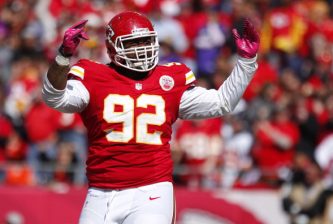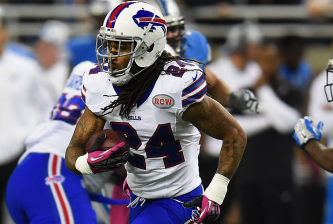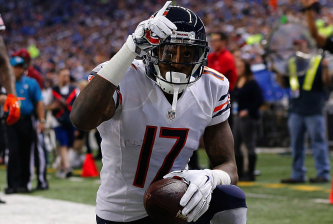Despite running back value depreciating and picking just one spot below, the Cleveland Browns opted to trade three draft picks in 2012 to secure Trent Richardson. Just a year later, after a near 1000-yard rushing season, the Browns’ new management flipped him to the Colts for a first-round pick.
After a promising start to his career, Trent Richardson has become the epitome of why teams’ don’t want to draft running backs early anymore. In his two seasons in Indianapolis, he’s mustered up just one 100 total-yard game performance for the Colts.
The Colts continue to give Richardson the lions-share of the carries week to week, despite boasting just 3.2 yards per attempt. The former Crimson Tide runner has proven he wasn’t worth a top-five pick, and may prove to be out of a starting job in Indianapolis by the end of the season.
Coming out of Alabama, evaluators were enamored by Richardson’s tough running style, balance through contact and lower body strength to pick up chunks of yardage up and through the hole. In what was considered a weak draft class, the Browns opted for the “sure-thing” running back to give their young offense a stable force.
What evaluators missed, however, was that Richardson’s lack of ideal speed and inadequate burst through the hole when forced to hesitate drastically limited his ability to be an effective runner throughout a game. That’s become clearly evident in his play with the Colts, where he struggles to gain consistent yardage when he can’t accelerate through an immediate opening.
He’s out-carrying Ahmad Bradshaw by 27 thus far in 2014, but he’s gaining a full yard and a half less per carry. What’s worse, he’s proved barely adequate in the passing game as a blocker, and despite his 15 catches, hasn’t been anything too special as a receiver.
Be it a mix of not willing to admit the trade was a poor one as well as wanting to keep Ahmad Bradshaw fresh, the Colts haven’t given up on Trent Richardson as their lead back. However, that may not be the case by season’s end, when Bradshaw starts to receive more and more carries, and afterwards, with the Colts clear biggest need being to upgrade their run offense.
For Richardson, two questions linger: Why, and when.
Why is it that Richardson has been so underwhelming throughout his career, even despite his limitations? Surely he wasn’t worth a top-ten pick, but even with those concerns added to his scouting report back then, no one could have predicted he’d be a likely replaceable back by his third season. And looking back at his rookie season with the Browns, where he had three 100 yard rushing games and 7 100 all-purpose yard performances, he showed some promise that he can be a lead back for the long-term for an NFL team.
The “why” still eludes evaluators, most of which are more than ready to chalk him up as a bust and move on. The Colts will likely do just that, with their projected late-first round pick perfectly in position to target either Todd Gurley or Melvin Gordon, two of the best runners to come out of college in the last three drafts.
But for the 24-yard old runner, I’ll still remain optimistic: when can Richardson begin to turn things around and re-emerge as a positive in a team’s offense, rather than a replaceable runner? At only 24, and with just 540 career college carries along with 542 NFL carries thus far, he still has plenty of “tread on his tires”.
That “when” needs to be sooner rather than later, because teams don’t have long tempers when it comes to developing running backs. Even good NFL running backs don’t get more than 6-7 seasons in the NFL, nonetheless ones that have underwhelmed this early in their career.
The Colts continue to give Richardson a chance to thrive, but for his future, he may need another change of scenery. To have success, Richardson needs an in-tune, veteran offensive line that can provide more consistency in running lanes than he’s getting in Indianapolis. While most runners can take advantage of bigger, more consistent running lanes, a slow-build up runner with Richardson’s open-field physicality and lower body strength could allow him to turn easy 3-4 yard runs into 15-20 yard plays after contact.
It’s certainly fair to but the blame on Richardson for his lackluster career thus far. There’s no excuse for his paltry 3.0 yards per carry as a Colt, and his days as the carry leader in Indianapolis are certainly numbered based on his current pace. But at 24 years old and the previously displayed talent in his college and Cleveland career, Richardson will get another shot to be a key part of an offense, whether it be in Indianapolis or elsewhere.
And if he can receive the type of offensive line situation and restoration of his confidence as a runner, there’s certainly a chance that Richardson could re-emerge as a top-tier running back talent in the NFL.




